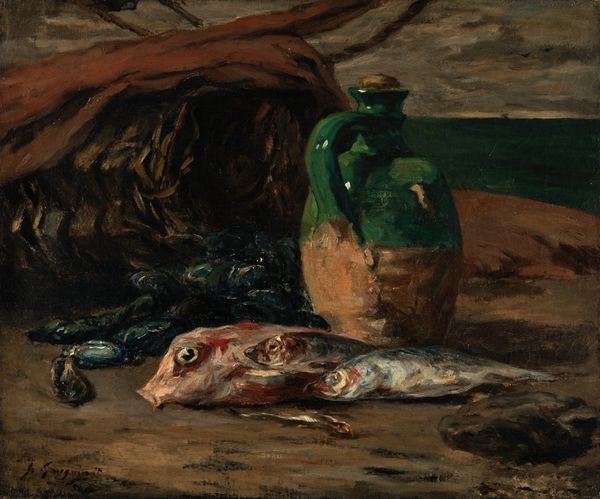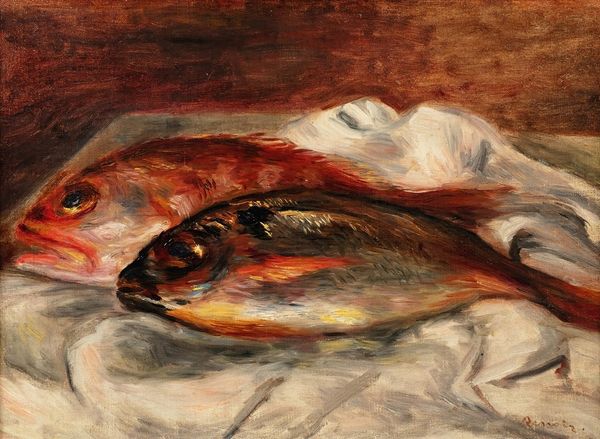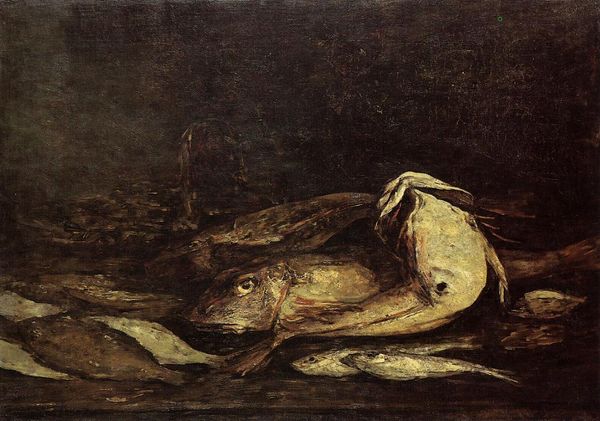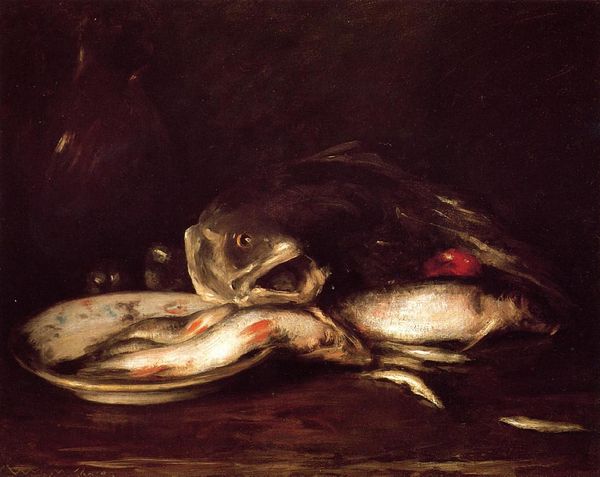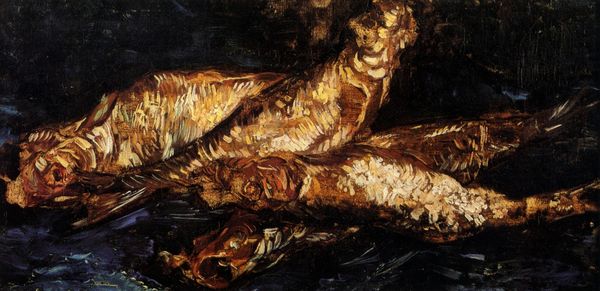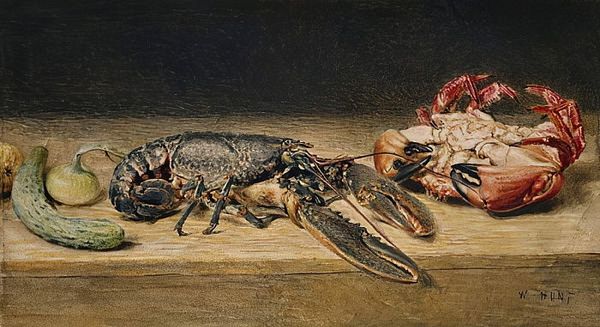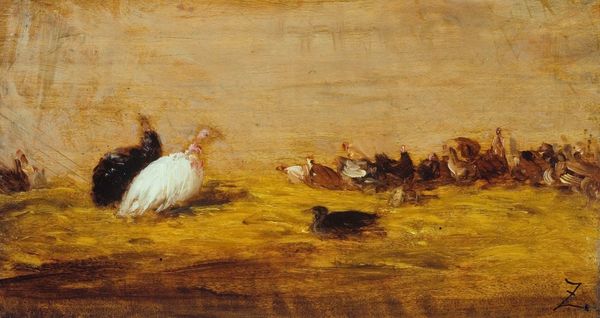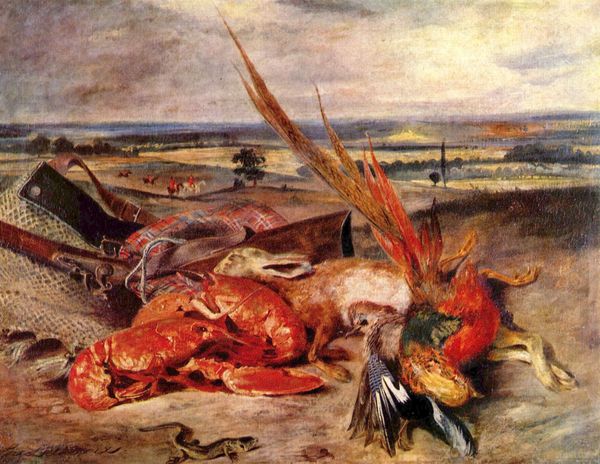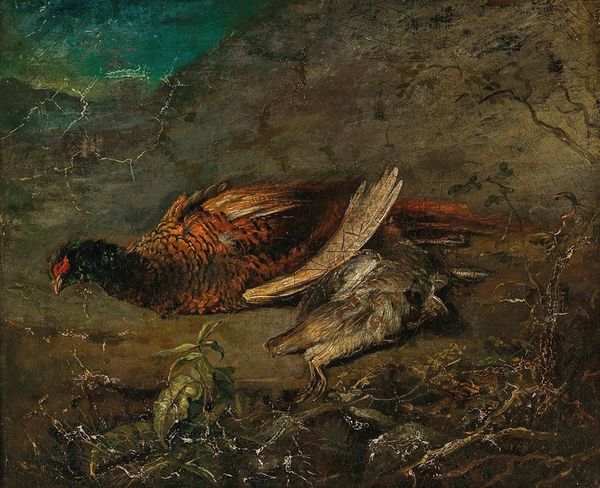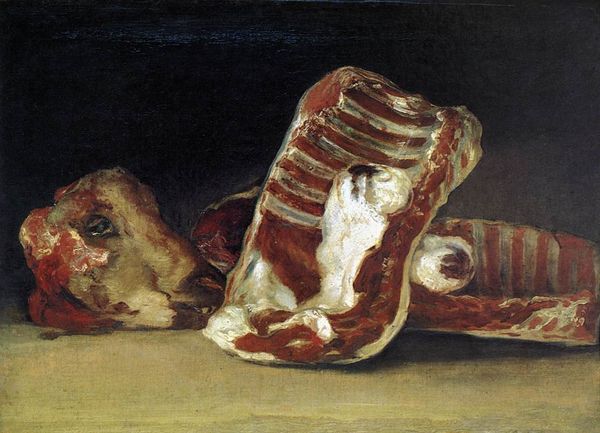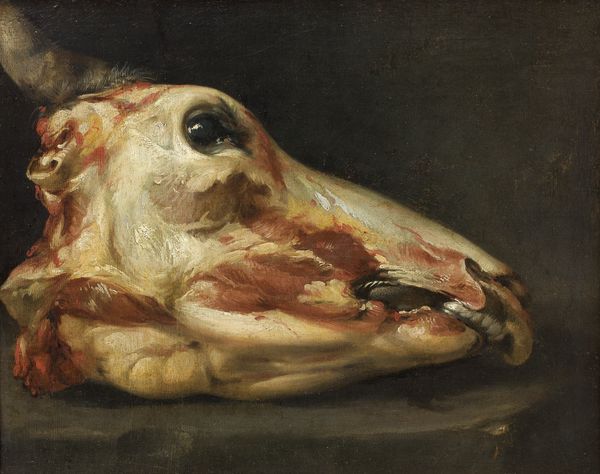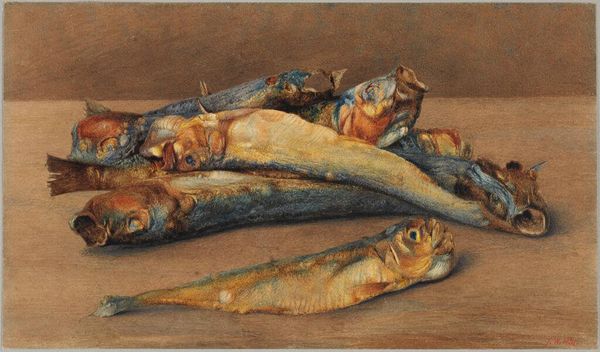
oil-paint
#
animal
#
oil-paint
#
oil painting
#
genre-painting
#
realism
Copyright: Public Domain: Artvee
Félix Ziem painted "Nature Morte Au Homard" during a time when the still life genre was being revitalized. The Belle Époque, marked by optimism and prosperity, also revealed a society deeply structured by class. Ziem's lobster, with its opulent redness, isn't merely food. It represents a luxury, a symbol of bourgeois indulgence amid growing social disparities. The darkness surrounding the lobster evokes a sense of mystery, perhaps reflecting the obscured labor and exploitation inherent in such lavish consumption. Lobsters, historically associated with wealth, became a staple in fine dining during this period. Yet, such displays of affluence existed alongside stark poverty, fueling social tensions. Ziem invites us to reflect on the relationship between luxury and the unseen costs of its production, urging us to question the ethics of consumption. The painting, beyond its visual appeal, becomes a commentary on the era's socio-economic complexities.
Comments
No comments
Be the first to comment and join the conversation on the ultimate creative platform.

